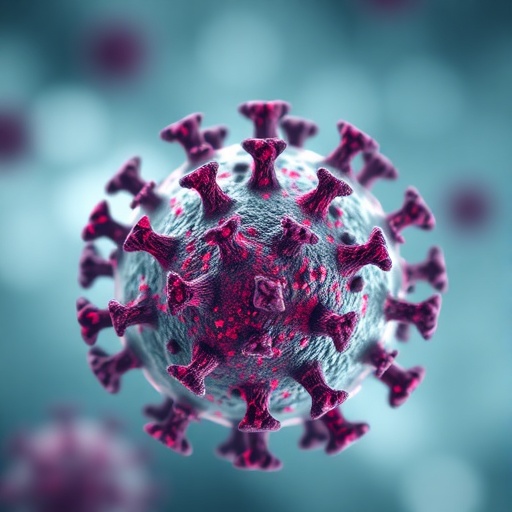Scientists from Brigham and Women’s Hospital and Harvard Medical School have pioneered a novel genetic assay aimed at enhancing diagnostic precision for X-linked dystonia-parkinsonism (XDP), a rare neurogenetic disorder predominantly affecting Filipino men. This innovative targeted test addresses longstanding challenges in identifying XDP, a debilitating movement disorder that manifests with symptoms resembling Parkinson’s disease but demands distinct diagnostic protocols due to its unique genetic basis.
XDP primarily manifests as involuntary muscle spasms, tremors, and abnormal postural and movement patterns, frequently initiating in craniofacial muscles such as those controlling the jaw, face, or neck. As the disease progresses, patients experience deterioration in fundamental functions including speech articulation, gait, and autonomy in daily living activities. Early and accurate detection of XDP is imperative, as it facilitates timely therapeutic interventions, comprehensive genetic counseling, and the provision of essential supportive care, improving patient outcomes and quality of life.
Diagnosing XDP poses significant clinical challenges because its phenotypic presentation overlaps with other movement disorders, including idiopathic Parkinson’s disease and various forms of dystonia. This symptom overlap frequently leads to protracted and costly diagnostic odysseys for patients, often delaying appropriate management. Standard commercial gene panels and whole-exome sequencing strategies fall short in detecting the crucial genetic variations responsible for XDP, particularly the subtle single nucleotide changes embedded within a specific region of the TAF1 gene.
The TAF1 gene mutation associated with XDP is particularly elusive because it comprises nuanced disease-specific single nucleotide changes (DSCs) in a region that evades routine genetic screening methodologies. Recognizing this technical gap, Dr. Eirini Christodoulou, a clinical fellow in pathology at Harvard University and a laboratory genetics and genomics fellow at Brigham and Women’s Hospital, spearheaded the development of a bespoke sequencing assay tailored to detect three pivotal DSCs linked with XDP. This advancement represents a significant leap forward in molecular diagnostics for the disorder.
Validation of this assay involved a meticulously designed study comprising eight individuals confirmed to carry the XDP mutation, seven mutation-negative controls, and three additional suspected cases. The targeted test demonstrated impeccable sensitivity and specificity, accurately identifying all known positive individuals and successfully diagnosing two patients who had previously received false-negative results from conventional genetic tests. These findings underscore the clinical utility of the assay in uncovering previously masked cases of XDP.
The novel diagnostic tool’s capacity to detect cases missed by exome sequencing and panel testing heralds an important paradigm shift in the approach to genetic testing for movement disorders. Dr. Christodoulou emphasized the necessity of deploying such specialized diagnostic strategies to unearth cases concealed by symptom overlap with other neurological conditions, thereby shortening diagnostic timelines and mitigating the emotional and financial burden borne by patients and healthcare systems alike.
X-linked inheritance patterns characterize XDP, whereby mutations localized on the X chromosome disproportionately affect males due to their hemizygous state—possessing a single X chromosome without a compensatory homolog. Female carriers, harboring two X chromosomes, frequently remain asymptomatic because the second allele can offset the pathogenic mutation, although some carriers may exhibit mild or subclinical manifestations. This fundamental genetic principle influences the epidemiology and clinical presentation of XDP.
While no curative treatment exists for XDP, clinical management focuses on symptomatic relief. Pharmacologic agents targeting motor and muscle symptoms provide some benefit, and select patients derive additional functional improvements from invasive modalities such as deep brain stimulation. Multidisciplinary therapeutic regimens incorporating physical, speech, and occupational therapy constitute integral elements of patient-centered care, aimed at preserving function and enhancing life quality despite progressive neurological decline.
The mutation responsible for XDP, also recognized as Lubag disease, traces its origins to founder effects among families from the Philippine island of Panay. This geographical and genetic linkage has contributed to underdiagnosis worldwide, compounded by insufficient awareness among clinicians not embedded within Filipino communities. Greater recognition and culturally tailored diagnostic frameworks are essential to bridge this gap and improve case identification in at-risk populations globally.
In their research abstract, the authors highlight the diagnostic and economic benefits of integrating this targeted assay into standard workflows for patients exhibiting XDP-compatible symptomatology. They advocate for increased provider education regarding the limitations of conventional genetic testing and emphasize that this bespoke XDP assay should be requisitioned in tandem with other diagnostic tools when clinical suspicion is high. Such an approach promises to enhance diagnostic yield and reduce protracted evaluations.
The study led by Dr. Christodoulou will be formally introduced at the Association for Molecular Pathology (AMP) 2025 Annual Meeting & Expo, scheduled for November 11–15 in Boston. The detailed findings will be presented in a poster session on November 15 at 9:15 a.m., at the Thomas M. Menino Convention and Exhibition Center. This platform offers an opportunity for discourse and dissemination among molecular pathology professionals, fostering broader adoption of this targeted testing strategy.
The Association for Molecular Pathology (AMP), established in 1995, has played a pivotal role in advancing molecular diagnostics across diverse fields including inherited conditions, oncology, infectious diseases, and bioinformatics. The AMP community, consisting of pathologists, clinical laboratory directors, scientists, technologists, and trainees, reinforces standards and fosters innovation within the molecular diagnostic domain. Continued collaborative efforts like this XDP testing development embody the society’s mission to transform patient care through precision medicine.
This pioneering diagnostic test represents a significant milestone in the molecular characterization and clinical management of X-linked dystonia-parkinsonism. By leveraging detailed genomic insight tailored to disease-specific variants, this assay transcends existing limitations and offers hope for earlier, more accurate diagnosis for patients who have historically faced diagnostic uncertainty. The implications extend beyond XDP, offering a model for precision diagnostics in rare neurological disorders globally.
Subject of Research: Genetic testing and diagnosis of X-linked dystonia-parkinsonism (XDP)
Article Title: [Not provided]
News Publication Date: [Not specified]
Web References: https://amp25.amp.org/
References: [Not provided]
Image Credits: [Not provided]
Keywords: Pathology, Medical Specialties, Health Care, Diseases and Disorders, Movement Disorders, Neurology, Genetic Disorders, Genetic Testing
Tags: craniofacial muscle involvement in XDPearly detection of neurogenetic conditionsgenetic counseling for XDPgenetic test for X-linked dystonia-parkinsonismimproving patient outcomes in movement disordersinnovative diagnostic assays for dystoniainvoluntary muscle spasms symptomsmovement disorder diagnosis challengesParkinson’s disease symptom overlaprare neurogenetic disorders in Filipino mentherapeutic interventions for rare disordersunique genetic basis of XDP





